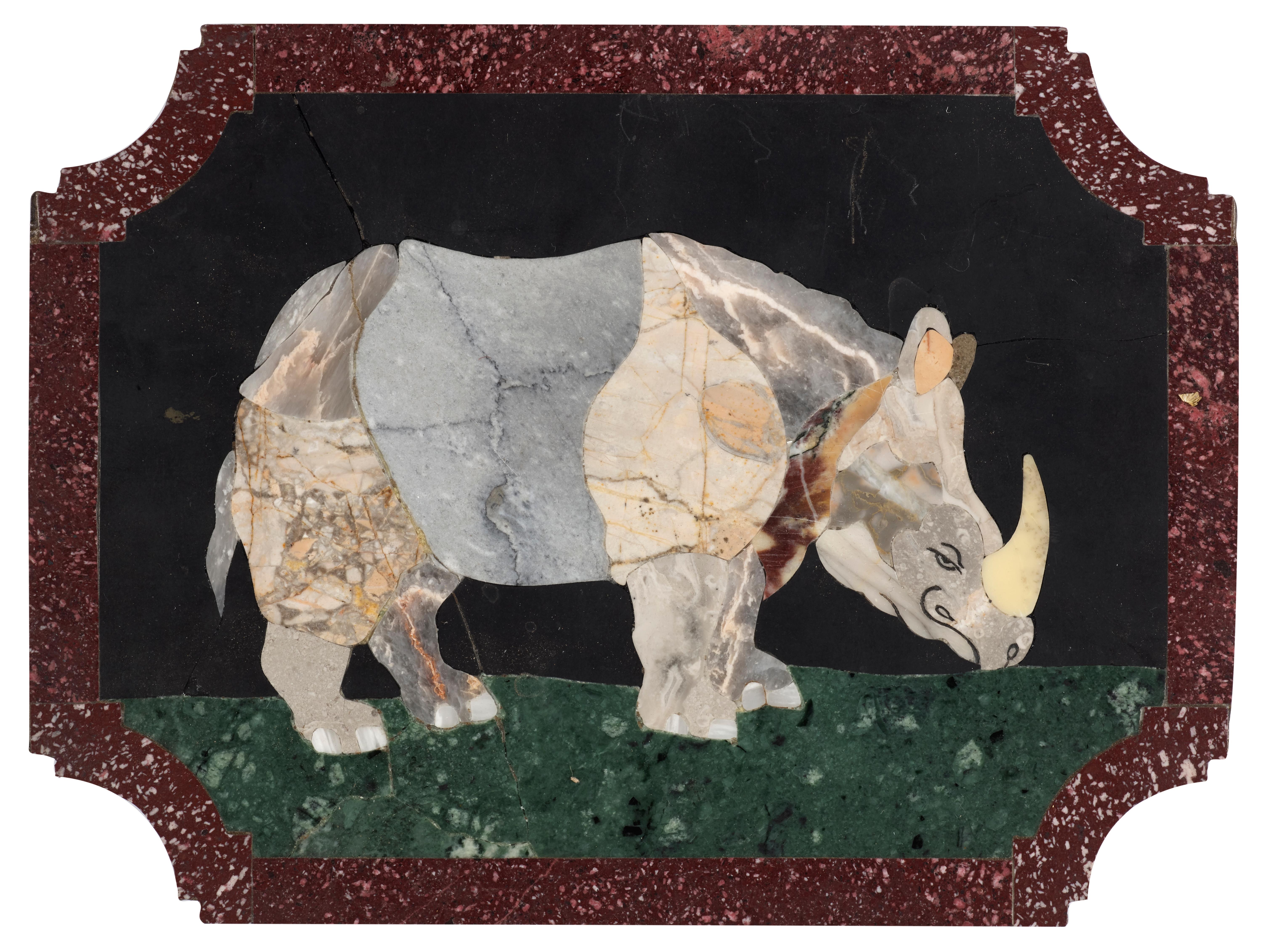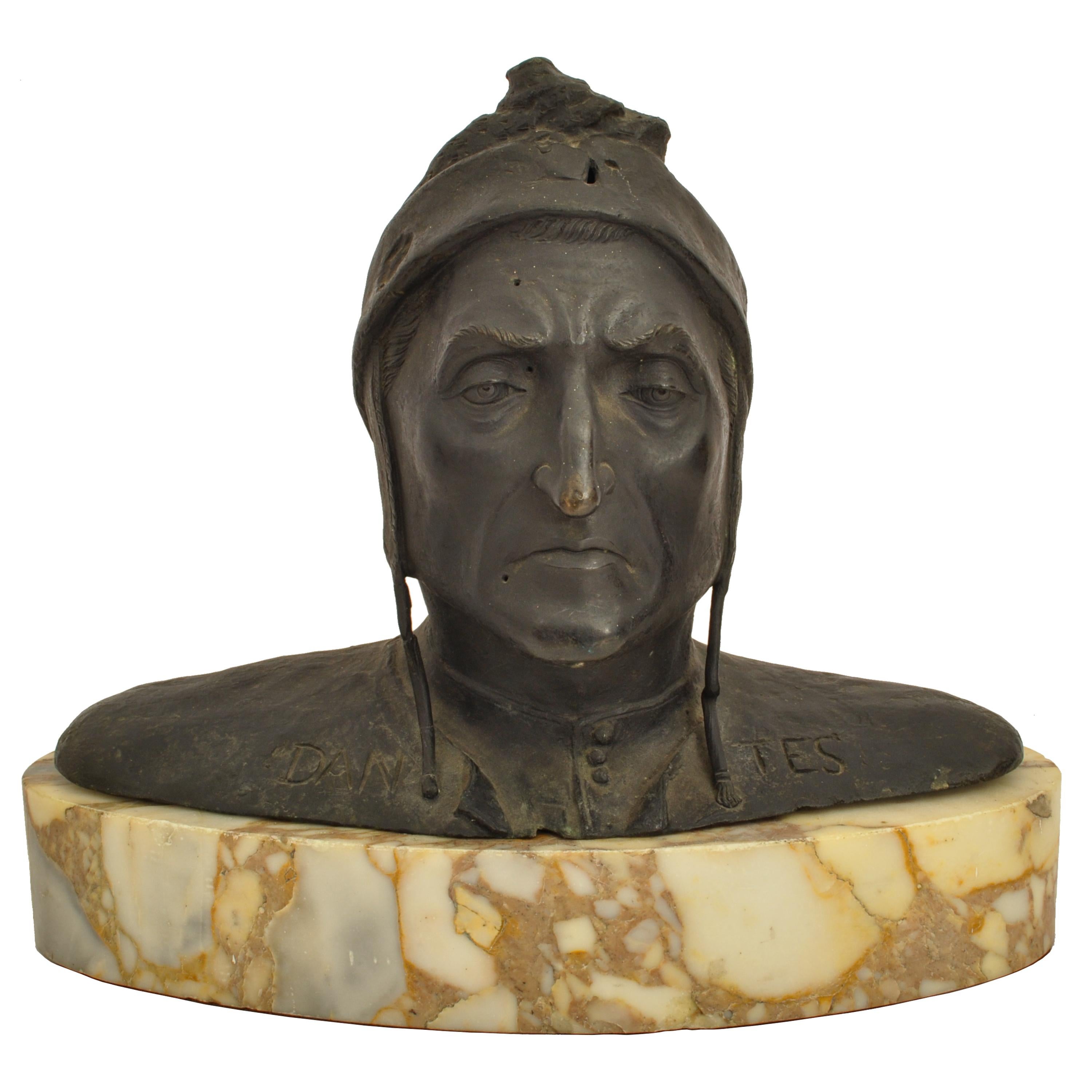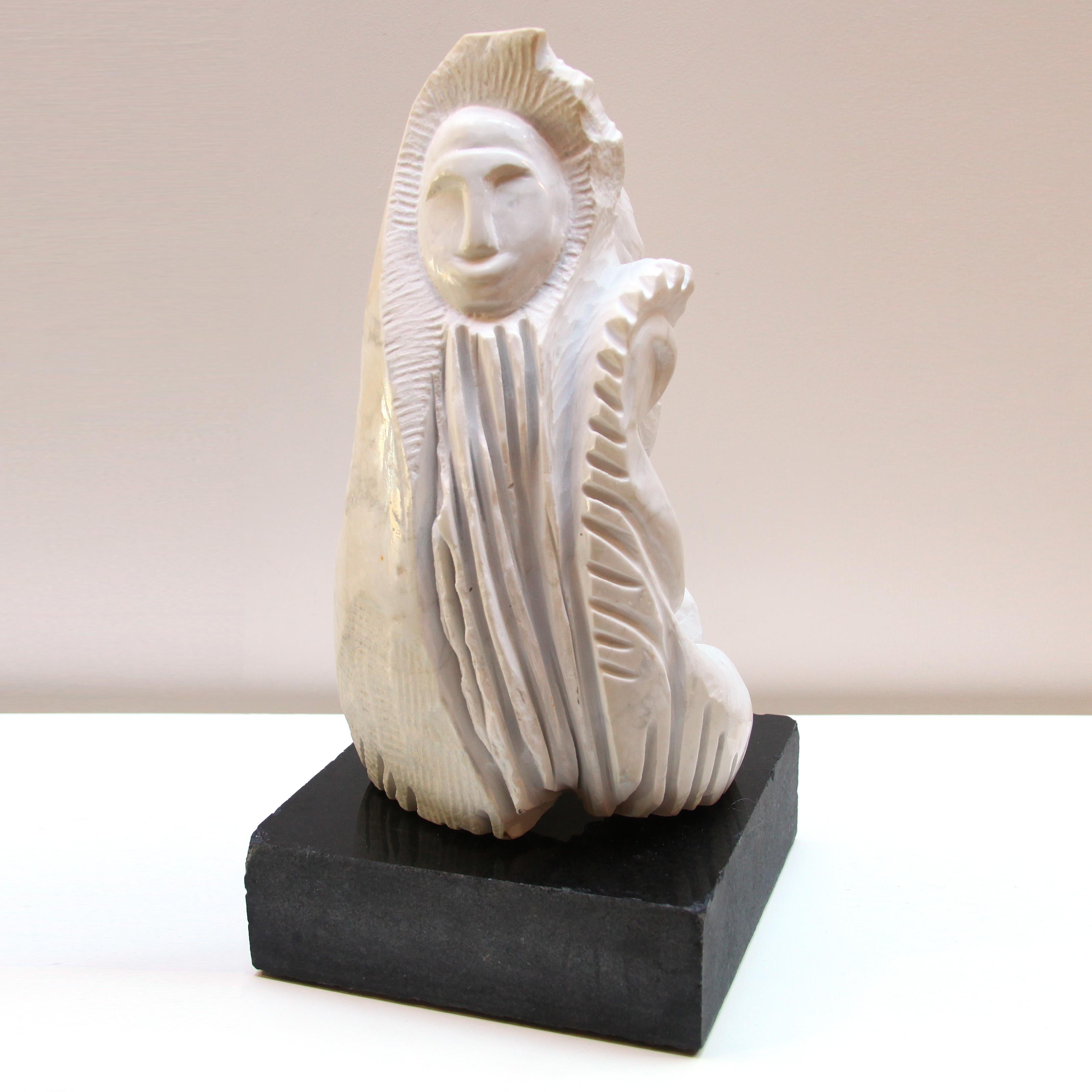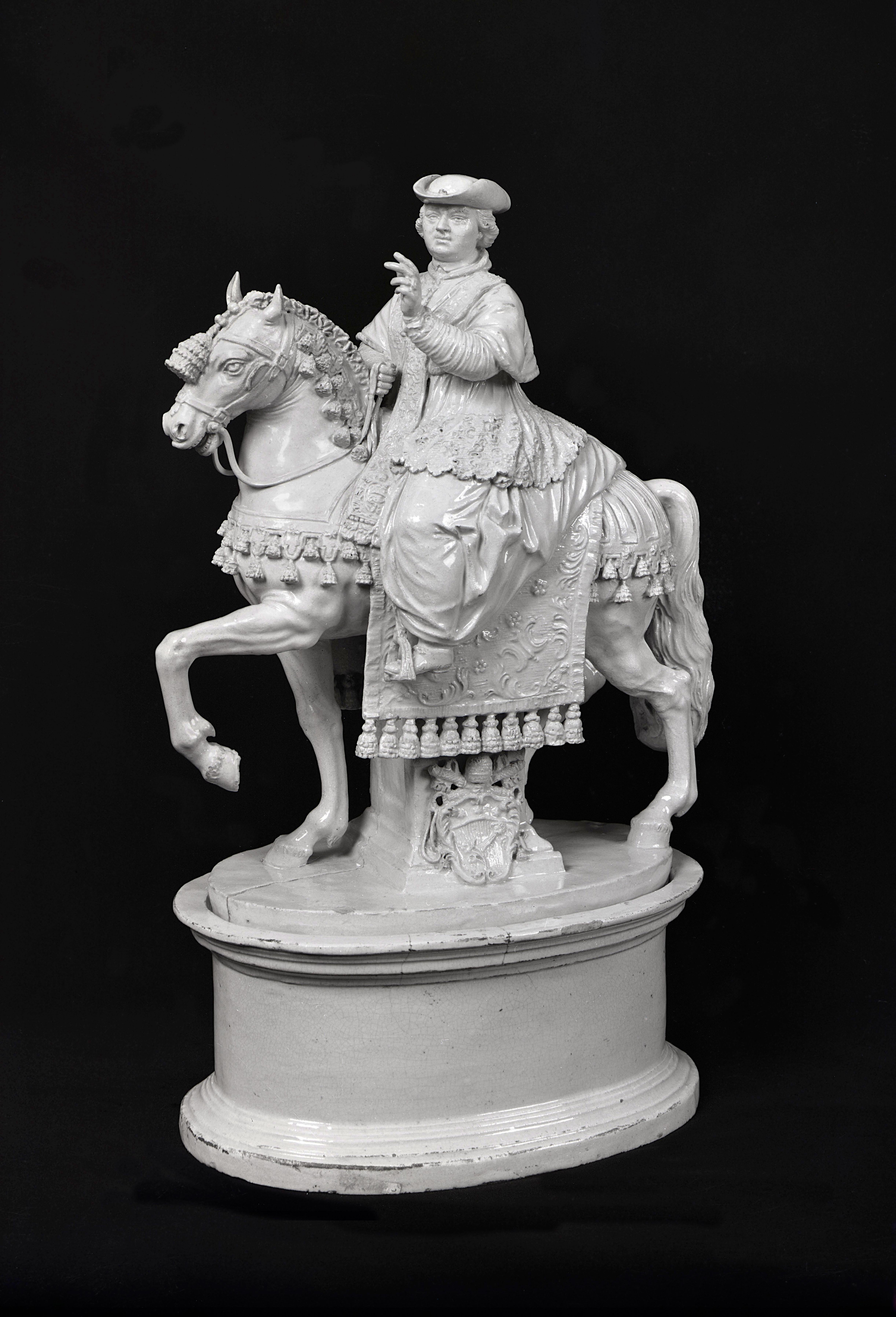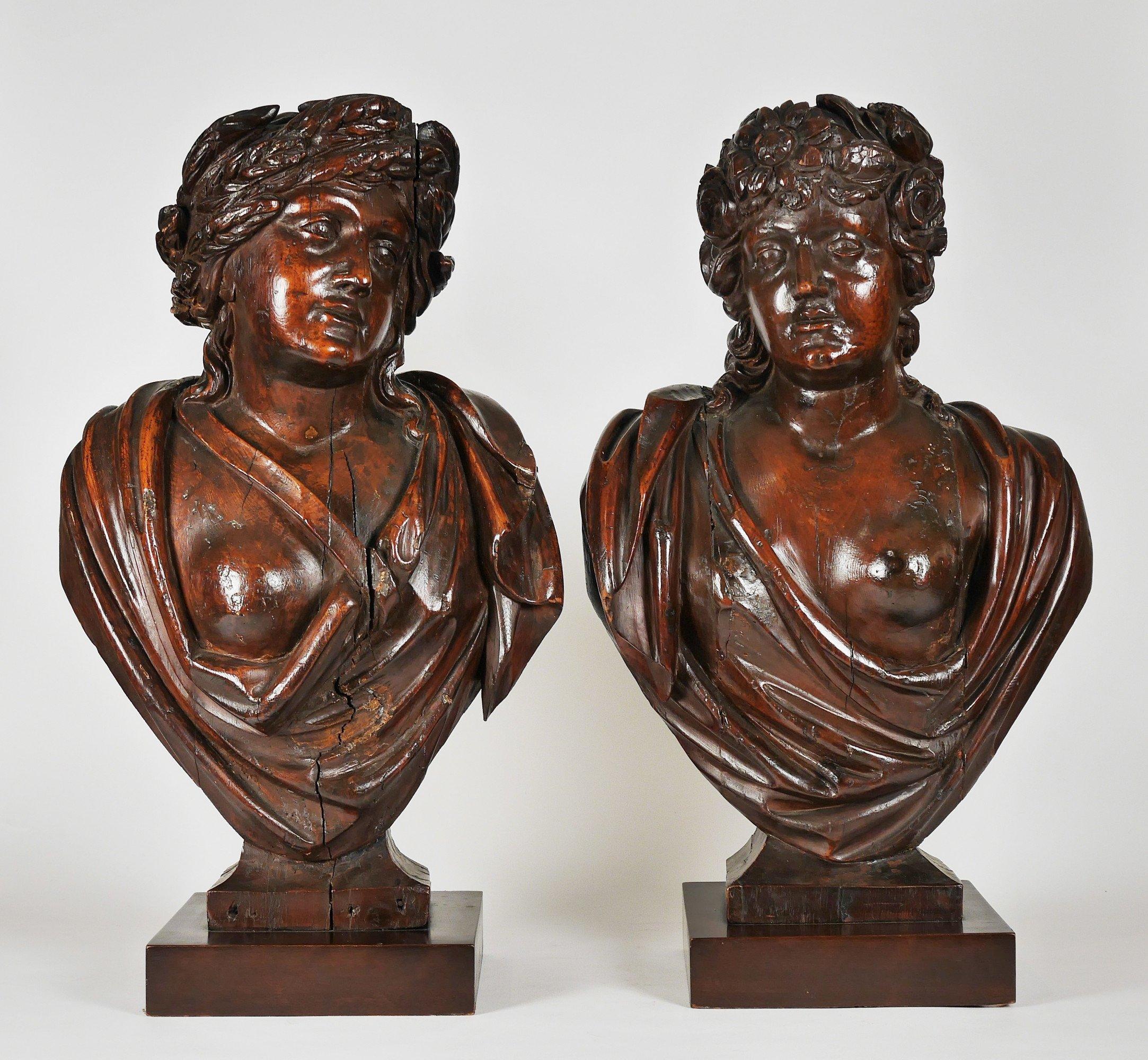Items Similar to Pair of Italian "Alabaster Stone Lions" after Antonio Canova; Mid 19th Century
Want more images or videos?
Request additional images or videos from the seller
1 of 10
UnknownPair of Italian "Alabaster Stone Lions" after Antonio Canova; Mid 19th Century Circa 1850
Circa 1850
About the Item
"Pair Recumbent Stone Lions"
after Antonio Canova (1757-1822)
Italian (possibly Florence)
Mid 19th Century
Alabaster, marble
6 x 9 x 4 inches
This is an exquisite pair of Italian alabaster lions on marble bases based on the monumental lions carved by Antonio Canova (1757-1822), the greatest Italian neoclassical sculptor. Canova sculpted the marble lions for the monumental tomb of Pope Clement XIII in St. Peter’s, Rome in 1792
Canova Lions refers to the pair of copies of lion sculptures by Antonio Canova. When Canova created the sculptures in 1792, he installed them on the tomb of Pope Clement XIII. The marble sculptures are some of the most prominent features in St. Peter's Basilica in Rome. Given the intricacies of creating the original Canova lions, some artists created molds and replicated them. A good example is the pair of lion sculptures at the Corcoran Gallery of Art entrance in Washington DC which have stood in their same location since 1860. Canova was able to create such life-like, believable sculptures because as one of the premier artists in 18th-century Rome, he was known for the length of time he spent during the study phase. Canova was so meticulous that when the time came to create a sculpture, he would do it without making any corrections. With his large studio, Canova was able to execute highly-sophisticated projects for rulers like French Emperor Napoleon Bonaparte, European aristocracy and nobility as well as prominent Italian religious figures.
St. Peter's Basilica in the Vatican City is home to exquisite works of art by some of Italy's finest sculptors, including Michelangelo. Like Canova, Michelangelo took part in memorable sculptural and architectural projects. Especially notable examples of Michelangelo's work are the sculpture of David in Florence and the frescoes on the ceiling of the Sistine Chapel. Clearly Canova is in good company regarding his stature as an artist. Having worked for St. Peter's Basilica, he must have made a name for himself and attracted commissions for bigger projects. You only need to see the popularity of the Canova lions to know his impact on the world of art.
By the close examination of the two Canova lions it's possible to derive their meanings. While one lion is sleeping, the other is more vibrant. The combination of the two lions tells us about the Pope's moderate yet determined mien. Before he died, Canova made many copies of the two lions for different clients across the world. Other artists created copies many years after he had died.
The Canova lions have proved to be eternally popular images; copies were made soon after in the workshops of Rome to sell to wealthy ‘Grand Tourists’ as souvenirs from their classical tour. In England, Canova’s greatest patron was the 6th Duke of Devonshire whose seat was at Chatsworth House, Derbyshire. The Grand Tour of the late 17th, 18th and 19th centuries saw many upper class, wealthy and aristocratic gentlemen and ladies traveling to Italy and Europe for pleasure, education and inspiration. This afforded them the opportunity to view important classical and Renaissance works of art and architecture.
The term ‘Grand Tour’ was coined by the Catholic priest and travel writer Richard Lassels (circa 1603-68), who used it in his influential guidebook "The Voyage of Italy," published in 1670, to describe young lords travelling abroad to learn about art, architecture and antiquity. Robert Adam wrote of Rome in 1755, ‘Rome is the most glorious place in the universal world. A grandeur and tranquillity reigns in it, everywhere noble and striking remains of antiquity appear in it, which are so many that one who has spent a dozen years in seeing it is still surprised with something new…’
- Creation Year:Circa 1850
- Dimensions:Height: 6 in (15.24 cm)Width: 9 in (22.86 cm)Depth: 4 in (10.16 cm)
- Medium:
- Movement & Style:
- Period:
- Condition:This pair is in very fine condition and are beautifully carved.
- Gallery Location:SANTA FE, NM
- Reference Number:1stDibs: LU1408211778962
About the Seller
5.0
Platinum Seller
These expertly vetted sellers are 1stDibs' most experienced sellers and are rated highest by our customers.
Established in 1995
1stDibs seller since 2020
89 sales on 1stDibs
Typical response time: 1 hour
- ShippingRetrieving quote...Ships From: Santa Fe, NM
- Return PolicyA return for this item may be initiated within 2 days of delivery.
More From This SellerView All
- Balancing Elephant, Circa 1930s, Art Deco, Louis-Albert Carvin (1875-1951)Located in SANTA FE, NMBalancing Elephant Louis-Albert Carvin (France, 1875-1951) Bronze, marble Circa 1930s, Art Deco 8 x 7.5 x 2 (4 1/4 x 7 1/2 x 1 7/8 figure) inches Artist Louis-Albert Carvin, born in Paris in 1875, was exposed to art from an early age through his painter father. Carvin's formal education in art began at the École des Beaux-Arts, where he studied under artists like Émmanuel Frémiet and Georges Gardet. Over the years, artist Louis-Albert Carvin became a renowned sculptor, dedicating his life’s work to the modeling of human and animal figures. He studied under Fremiet and Gardet and became a member of the Société des Artistes Français, exhibiting at the Salon des Artists Francais from 1894 until 1933 winning the Medal of Honor in his first year in 1894. Remarkably, he sculpted La Muse de l’Aviation, the bronze trophy...Category
1930s Art Deco Figurative Sculptures
MaterialsMarble, Bronze
- Antique 19th century Bronze Dog Portrait of a Maltese on a Marble BaseLocated in SANTA FE, NMAntique Bronze Dog Portrait of a Maltese on a Marble Base French 19th century 1/2 x 8 x 5 1/2 inches The chiseled bronze has a nuanced, rich brown patina depicting a Maltese in the round, seated on a quadrangular marble base decorated with very fine gilt bronze flowers and fluted feet. Napoleon III, Louis XVI style. Based on a model by Jacques Caffieri for the Prince de Condé in 1773. (More images to be added.) Executed during the nineteenth century, this figure is fully in line with the eclectic taste of the reign of Napoleon III. Indeed, the Empress Eugenie brought the Louis XVI style up to date in her castle of Compiègne. Jacques Caffieri is one of the most famous bronze smiths of the eighteenth century. In 1715 he was admitted as a master caster and chiseler, and worked almost exclusively for the crown castles...Category
19th Century Rococo Figurative Sculptures
MaterialsMarble, Bronze
- Antique Pair of Russian Wolf Hound/Borzoi Dog Portrait Sculptures circa 1930'sLocated in SANTA FE, NMAntique Pair of Russian Wolfhounds/Borzois Dog Portrait Sculptures by Scalini (aka Scali; Italian, 20th century) circa 1930's Patinated spelter 9 x 14 inches (on bases) Though rath...Category
1920s Art Deco Figurative Sculptures
MaterialsCast Stone, Bronze
- Antique Bronze Dog "Whippet with a Butterfly" Arthur Waagen (1833-1898) 1 of 2By Arthur WaagenLocated in SANTA FE, NMAntique Bronze Dog Portrait “La Levrette au Papillon” or “Whippet (Greyhound) with a Butterfly” Arthur Waagen (Germany, France 1833-1898) Circa 1860’s 11 x 8 x 4 inches (1 of 2. ...Category
1860s Academic Figurative Sculptures
MaterialsBronze
- Orientalist African Hunter Leaning on His Shield 19th cent. Black Forest, GermanLocated in SANTA FE, NMOrientalist African Hunter Leaning on His Shield Black Forest, School Switzerland 19th century Carved Wood 21 inches This is an exceptionally beautifu...Category
19th Century Academic Figurative Sculptures
MaterialsWood
- Antique Bronze Dog "Whippet with a Butterfly" Arthur Waagen (1833-1898) 2 of 2By Arthur WaagenLocated in SANTA FE, NMAntique Bronze Dog Portrait “La Levrette au Papillon” or “Whippet (Greyhound) with a Butterfly” Arthur Waagen (Germany, France 1833-1898) Circa 1860’s 11 x 8 x 4 inches (2of 2. No...Category
1860s Academic Figurative Sculptures
MaterialsBronze
You May Also Like
- Antique Italian Grand Tour Bronze Marble Bust Sculpture Dante Alighieri 1880Located in Portland, ORA good antique Italian Grand Tour Bronze and marble bust of Dante Alighieri, circa 1880. The bronze is most likely Florentine and mod...Category
Late 19th Century Italian School Figurative Sculptures
MaterialsMarble, Bronze
- A set of four hard stone marquetry plaques depicting animals, Italy 18th centuryBy Antonio TempestaLocated in PARIS, FRThese four plaques represent either domestic (a horse, two rams) or exotic animals (a rhinoceros and an elephant). Made on slate slabs cut to shape (a rectangle with concave angles), they are all based on the same narrative scheme: in a frame of Egyptian porphyry, an animal in multicoloured marble is represented advancing on a green marble floor, standing out against a black slate background. These plates were made in Italy, probably in Florence or in Rome, during the 18th century. We think that their primary purpose was to decorate the drawers of a cabinet. Like many other compositions in hard stone, these plaques were inspired by engravings that were a widespread decorative repertoire in the workshops. Three of the plaques presented here were directly inspired by works by Antonio Tempesta (1555 - 1630): the Rhinoceros, the Polish Horse...Category
18th Century Italian School Figurative Sculptures
MaterialsMarble, Slate
- Figurative Marble Sculpture, "Kindred"By TONY GANGITANOLocated in San Diego, CAThis is a one of a kind Italian white Carerra marble sculpture by San Diego artist Tony Gangitano. Its dimensions are 10" x 25" x 10". It is on a black granite base. A certificate of authenticity will follow delivery. This sculpture is a representation of Mary and Christ...Category
2010s Italian School Figurative Sculptures
MaterialsGranite, Marble
- Pio VI blessing on horseback during the Cavalcata for the PossessionLocated in Roma, RMVolpato or Cialli manufacture, molded by Lorenzo Weber, Pio VI blessing on horseback during the Cavalcata for the Possession English white terracotta of 45 x 29 x 17 cm, datable to...Category
Mid-18th Century Italian School Figurative Sculptures
MaterialsTerracotta
- The Good ShepherdLocated in Roma, RMANTONIO MARAINI The Good Shepherd bronze bas-relief cm 44.5 x 15 x 8 signed "A. Maraini" wooden base Antonio Maraini, born in Rome in 1886, was encourag...Category
20th Century Italian School Figurative Sculptures
MaterialsBronze
- 18th Century Italian Carved Neoclassical Semi Nude Female BustsLocated in Beachwood, OH18th Century Italian Carved Neoclassical Semi Nude Female Busts Wood affixed to wood plinths "Leone Della Torra / Italy Country of Origin" labels on b...Category
18th Century Italian School Figurative Sculptures
MaterialsWood
Recently Viewed
View AllMore Ways To Browse
Antique Bases
Italian Lion
Sculptures Of Lions
Italian Sculpture Stone
Mid Century Stone Sculpture
Midcentury Stone Sculpture
Marble Lion
Marble Lions
Midcentury Italian School
Florence Marble
Marble Sculptures Pair
Pair Of Alabaster
19th Century Stone Sculpture
Florence Stones
Stone Lion
Stone Sculpture Pairs
Pair Of Stone Sculpture
19th Century Alabaster
